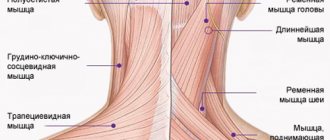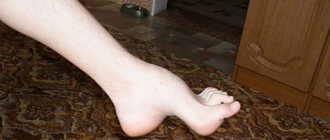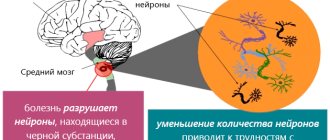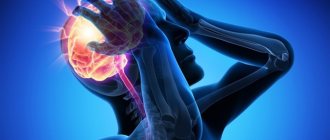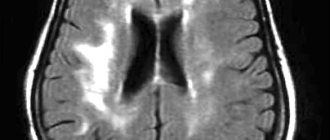What is intercostal neuralgia?
Let's start with the fact that intercostal neuralgia is not a disease.
This is the name for pain that occurs when the intercostal nerves are exposed to various pathological factors, for example, herpetic infection, tumors, injuries, disc herniation, protrusion, osteochondrosis, etc. In other words, thoracic intercostal neuralgia can be called not all chest pain, but only that where intercostal nerves are involved. And this needs to be clearly understood so that the confusion that you often encounter at the everyday level does not arise when you hear people using the term intercostal neuralgia, but at the same time they mean a completely different pathology. By the way, even some doctors sometimes make the diagnosis of intercostal neuralgia erroneously, while in reality it most often turns out to be myofascial syndrome. Intercostal neuralgia, myalgia, myositis, myofascial syndrome, osteochondrosis, disc herniation, protrusion and many other terms are not synonymous. These are the names of specific pathologies that have their own characteristics and differences. And, since they are different, it means that the approach to them must also be different, otherwise there will be no sense in the treatment.
In general, the term intercostal neuralgia should not be used haphazardly, and it is not worth calling all pain in this area that way.
There are three most common causes of chest pain:
- Chest pain not associated with pathologies of the intervertebral discs and intercostal nerves. They can be caused by bruises, frequent hypothermia, prolonged stay in a tense, uncomfortable position, and poor posture. As a rule, they go away within 2 weeks.
- Facet syndrome - develops as a result of inflammation and degenerative processes in the intervertebral joints.
- Intercostal neuralgia is pinched or irritated intercostal nerves.
There are many other possible causes of chest pain: angina pectoris, infectious diseases (for example, herpes zoster), thoracic osteochondrosis, intervertebral hernia, aortic aneurysm, malignant tumors of the lungs and pleura, esophagus, pancreatic diseases, and previous chest surgeries.
We will call you back, leave your phone number
Message sent!
expect a call, we will contact you shortly
Intercostal neuralgia in women & Intercostal neuralgia in men.
Intercostal neuralgia in men occurs as often as in women, but at the same time, intercostal neuralgia in women has its own characteristics. For example, women often perceive pain due to intercostal neuralgia as a manifestation of breast disease, and not as neuralgia. And it is clear that such thoughts can only cause additional anxiety and worry. But there is one consolation - although pathology of the mammary glands is indeed common, even if it is present, the vast majority of pain is not associated with it, but with the spine, nerves and muscles. This does not cancel periodic examinations with a mammologist, but it does mean that you should never panic. And most importantly, keep in mind that in medicine there is such a concept - a disease “in disguise”, when one disease is masked by another. Let's look at the insidiousness of this problem using our example. Pathology of the mammary glands is a psychological dominant that causes much more concern than intercostal neuralgia. Accordingly, if a woman simultaneously has thoracic intercostal neuralgia and pathology of the mammary glands, then all her thoughts will be focused on the glands. The rest will fade into the background. And it is quite natural that in this situation a woman, first of all, will turn to a mammologist. If the mammologist turns out to be knowledgeable, he will quickly figure out what is causing the pain: glands or neuralgia. And, if it is neuralgia, he will refer the patient to a chiropractor. By the way, it is the chiropractor who is the main doctor for intercostal neuralgia (but we’ll talk about this later). And if a mammologist comes across an inexperienced or over-insurer, what will he do? Most likely, having discovered his own profile pathology in the patient, he will also focus on this pathology and will not “dig” deeper. Consequently, if in reality the patient was bothered by pain due to intercostal neuralgia, and the pathology of the mammary glands was only a background that did not cause pain, then treatment by a mammologist will not solve the problem. The pain will remain. And this will cause the woman even more anxiety. Her faith in doctors will suffer. Your nerves and time will be wasted. This is what the disease turns out to be “under the mask.” Meanwhile, intercostal neuralgia in women very often occurs under the guise of mammary gland pathology. Be sure to remember this!
Dear women, the best advice for pain in this area is to contact two specialists at once. A mammologist will give you confidence and relieve fears, and a chiropractor will cure intercostal neuralgia. After all, as we have already said, a chiropractor is the key doctor for intercostal neuralgia. This approach is the most reasonable. It will save you both time and nerves.
Intercostal neuralgia in men also has its own characteristics, and these are not always differences. For example, very similar psychological aspects. So, if in women intercostal neuralgia often occurs under the guise of mammary gland pathology, then in men it occurs under the guise of heart disease. By the way, it is precisely the “disguise” as heart disease that distinguishes left intercostal neuralgia from intercostal neuralgia on the right side. Do you know how to distinguish intercostal neuralgia from a heart attack at home? Very simple. Heart pain is relieved by nitroglycerin, but neuralgia is not.
According to statistics, intercostal neuralgia on the left in the heart area equally often causes a false alarm in both men and women. Moreover, in women, both the heart and the mammary gland come under suspicion. But, right intercostal neuralgia is “suspicious” only for women. Men immediately understand that this is intercostal neuralgia.
Symptoms of intercostal neuralgia
It is believed that the main symptom of intercostal neuralgia is pain in the intercostal space. But how can one distinguish intercostal neuralgia from one symptom, even such a striking one? After all, pain in the ribs also occurs with other pathologies. Obviously, for an accurate diagnosis, more signs of intercostal neuralgia are needed. Therefore, we decided to talk about the symptoms and causes of intercostal neuralgia in more detail.
The name intercostal nerves speaks for itself. They are actually located between the ribs. Starting from the spine, they cover the chest on both sides. The intercostal nerve cannot suffer from a small or even moderate bruise, since it is located deep under the rib. Therefore, the mechanical cause of intercostal neuralgia can be serious injuries, for example, a fracture; a tumor compressing a nerve, or dystrophic pathology of the spine - osteochondrosis, hernia and disc protrusion.
In addition to mechanical ones, there are also infectious causes of intercostal neuralgia, most often a herpetic infection. Due to its characteristics, it often affects these nerves. Herpes, as a sign of intercostal neuralgia, is easily recognized by characteristic rashes that coincide with the area of pain.
Thus, the causes of intercostal neuralgia are infectious and mechanical. But, the connection between intercostal neuralgia and breathing is a myth. Remember, at the beginning of the article we talked about the difference between real intercostal neuralgia and what many people mistakenly consider to be such. For example, the appearance of intercostal neuralgia after a cold is not neuralgia at all, but myofascial syndrome. If you are not aware, myofascial syndrome is a muscle disease in which small painful areas - trigger points - form in the muscles. These points may remain in a latent state for a long time and not manifest themselves in any way. But as soon as they are activated, pain immediately arises. The most common factor in the activation of trigger points is overload of the affected muscles. The intercostal muscles are classified as respiratory muscles, as they are involved in the act of breathing. A cough is a forced exhalation. Therefore, intercostal neuralgia when coughing or after a cold is not neuralgia, as many people mistakenly think, but myofascial syndrome, provoked by overload of the respiratory muscles from coughing. By the way, an indirect sign of how to distinguish intercostal neuralgia from myofascial syndrome is the duration of the disease. True intercostal neuralgia takes a long time to heal. Especially if it is caused by a fracture or tumor. And myofascial syndrome has a shorter treatment period. But it is impossible to say exactly how long intercostal neuralgia lasts without seeing the patient. Firstly, you need to make sure that it is intercostal neuralgia and not some other pathology, and secondly, it all depends on the situation. Agree, neuralgia from herpes and from a fracture will have completely different treatment periods.
Separately, it is necessary to say about the so-called false symptoms of intercostal neuralgia. Muscle tension, muscle twitching, increased pain when coughing, sneezing, turning the body; forced body position to relieve pain, sweating, high blood pressure and a number of other symptoms are not signs of intercostal neuralgia, although they are often attributed to it. These symptoms refer to pathologies similar to neuralgia. Being able to distinguish between similar pathologies is one of the basic skills of a doctor, which is specially taught, and which allows the doctor to make an accurate and correct diagnosis. It remains only to remind you that a doctor for intercostal neuralgia is a chiropractor, or even better, a chiropractor-neurologist.
Treatment of intercostal neuralgia
Treatment for intercostal neuralgia depends on what causes it. Statistics say that the vast majority of pain in this area is caused by mechanical causes - pathology of the spine and muscles - osteochondrosis, disc herniation, protrusion, myalgia and myofascial syndrome. Therefore, the answer to the question of how to treat intercostal neuralgia is obvious. Since most of the reasons are mechanical, then they should be eliminated mechanically. This means that the best way to treat thoracic intercostal neuralgia is manual therapy. Moreover, not ordinary, but soft manual therapy, which is not only softer, but also much more effective than simple realignment of the vertebrae. Gentle manual therapy works extremely gently and delicately. Its main advantage is the safe elimination of muscle tension that “pinches” the nerve and stiffens the spine. This is why a chiropractor is the primary physician for intercostal neuralgia. In cases where the problem is advanced, manual therapy can be supplemented with medications and physical therapy.
Treatment of intercostal neuralgia with herpetic lesions requires parallel treatment by a dermatologist. Rare and severe forms caused by fractures and tumors require high-tech and expensive medical care, which is carried out under government programs in specialized clinics.
How to relieve pain from intercostal neuralgia if a person finds himself far from full-fledged medicine and only a pharmacy nearby? Pain in acute intercostal neuralgia is best relieved with the combined use of non-steroidal and steroidal anti-inflammatory drugs. But, we draw your attention - see a specialist as soon as possible. This must be done even if the pain stops completely. It is in your best interests to be sure that nothing more serious lies behind the pain and intercostal neuralgia.
Basic methods of treating intercostal neuralgia at home
Before you start treating intercostal neuralgia at home, you should definitely visit a specialist. He will conduct the necessary examinations and prescribe adequate treatment measures. You must strictly adhere to the regimen prescribed by the specialist and not self-medicate, otherwise you risk only harming yourself even more.
Medicines
Drug treatment mainly helps only to relieve symptoms and provide general support to the body . The patient is usually prescribed a course of vitamins with an emphasis on B vitamins, pain medications and relaxants to relieve muscle spasms. Anti-inflammatory drugs are sometimes added, but their effectiveness is questionable.
| The following can be used to relieve pain: |
|
| Ointments can be used: |
|
also important for the patient at home to adhere to bed rest for 1-3 days with maximum straightening of the spine . That is, the body should be positioned horizontally on a fairly hard surface.
After the pain has been relieved, a diagnosis should be made that will help identify the true cause of the disease. If it is determined that intercostal neuralgia is a consequence of one of the common diseases, such as a cold, infection, diabetes and others, then measures are taken to treat it.
If the disorder is associated with a disease of the spine, then along with medications, massage, physical therapy and other methods of physiotherapy are used to relieve stress on the nerve endings. In case of serious disorders, spinal traction may be indicated.
Find out more about treating intercostal neuralgia with medications:
- What injections and ointments are used for intercostal neuralgia
- You can learn more about the use of tablet medications for intercostal neuralgia here
- You can read more about drug treatment for back pain on the page
Exercise therapy
Did you know that...
Next fact
A set of exercises should be prescribed by a doctor. It is recommended that at first the patient perform gymnastics under the supervision of a specialist, and later he can do it himself at home.
There are general exercises that are often recommended by neurologists:
- In a standing position with feet shoulder-width apart, bends are performed to the right and left sides, first with the arms lowered along the body, then with a gradual spread of them to the sides until the position of the cross, in which the muscles will be maximally loaded.
- Squats. They may be shallow. It is important to keep your back straight. To do this, you can put a small pillow on your head and try not to drop it. When performing the exercise, you can hold on to the back of the chair with your hand.
- Fitball exercises. In a sitting position, bend back while keeping your hands behind your head.
- Sitting on a fitball with your hands behind your head, smoothly turn your back to the left and right.
These simple exercises are useful not only for treatment, but also for the prevention of intercostal neuralgia.
For people who work in sedentary jobs, correct posture is very important. Ideally, experts advise replacing an office chair with a fitball of the right size - this way pain in the spine will appear much less frequently.
An important activity for rehabilitation of neuralgia is swimming . It allows you to use those muscles that practically do not work in normal life. Maintaining the body in the correct position and moving it in a dense environment requires a lot of energy, which has a positive effect on recovery.
Massage
Massage is done if the cause of neuralgia is muscle spasm. In order to speed up recovery, experts recommend including massage in the program, which, with regular use, helps to achieve excellent results.
Massage helps relax muscles and relieves pain . It also improves the general condition of the patient. To achieve the best results with it, it is recommended to perform it in a sitting position.
The essence of massage at home is to influence the intercostal spaces using your fingertips. They need to be rubbed and stroked on the affected areas. In addition, it is useful to rub and knead the back muscles with both hands.
It is also useful to collect your hands in a lock and rub them on your back and muscles in the area from the lower back to the shoulder blades.
